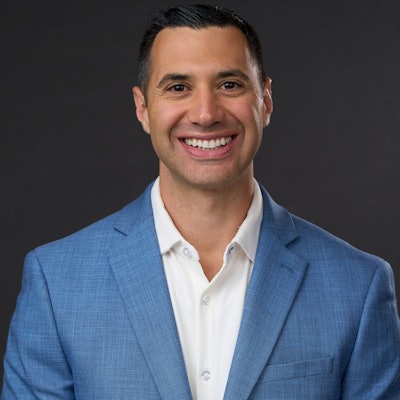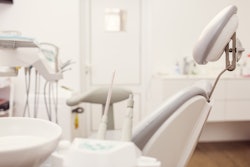Technology, tools, and training: These are the cornerstones of every successful dental practice and dental service organization (DSO). The innovations are coming at lightning speed, and it can be hard to keep up with the evolution of technology in hardware, software, and treatment methods.
We asked DSO leaders attending the Dykema DSO conference in Denver what they've implemented, the results they've seen, and what they would like to introduce into their practices in the next few months.
Jason Heffelfinger, CEO of Dental Care Alliance
"We have a lot of imperatives to execute in the rest of 2024. We're completing our rollout of Denticon PMS [practice management system] across all of our practices and then we'll be on to Cloud 9 for ortho right after that. For me, it's incredibly important to have standardization across all the practices and that starts with the PMS. Everything we're going to do is going to build off of that, so getting all of our practices on one unified cloud-based system was imperative for us.
"When you have one system that you can utilize across all your practices, it just makes it easier for everybody to execute. When we think about staffing, doctor days, data, it just makes it so much easier to understand where you have opportunities. Then you can thank them for the work they do, and, of course, you can course-correct when necessary.
"We piloted a partnership with Patient Prism to make sure we could take care of our patient journey throughout our practices, and we're excited about that.
"Another imperative that we've had great results with is GBS [guided biofilm therapy]. We're making the decision to implement that across our practices over the next few years."
Dr. Bradley Dykstra, founder of MI Smiles Dental Group
"The newest technology we've instituted is Pearl. We've had that a little over a year. That works really well with our Apteryx (digital imaging), which we've been using for many years. It's a really good combination.
 Dr. Bradley Dykstra.
Dr. Bradley Dykstra.
"Since we added Pearl AI [artificial intelligence], it's really helped the patients visualize what we're talking about on the x-rays. They can see the colors and bone level measurements and the different pathology highlighted. A picture's worth a thousand words. The response of new patients is, 'Wow, I've never seen this before and now after you've shown me what's there, I understand.'
"You can also compare x-rays and show them what their teeth looked like a year ago versus now and show them where an area is starting to decay a little bit.
"They have unequivocable visual evidence and that's the beauty of Pearl, and when you combine that with our great images from Apteryx, it's just wonderful."
Teresa Williams, chief financial and operations officer of Dental Express
"For the next six months, we're really dialing into the clinical efficiencies. How do we get more out of our teams, more out of patient visits for each patient who comes to see us? We've been focusing on same-day care initiatives: How do we measure it, how do we monitor it, how do we increase it?
"We've expanded our intraoral scanner technologies. Utilizing those more allows us to provide more removable dentures in a more efficient and timely manner, for example."
Thomas Passalacqua, director of business development at the Smilist Dental
 Thomas Passalacqua.
Thomas Passalacqua.
"The Smilist is piloting a couple of AI platforms for clinical diagnosis. It's still underway, but it has been amazing just with the results we've seen so far.
"We're also piloting RCM [revenue cycle management] AI. Getting patients' insurance verification on the spot has been really exciting. We have a bot that allows patients to see if they're qualified at the time of booking. That helps our providers deliver care in a timely manner. We've also used AI to improve on collecting from our patients."
Dr. AJ Acierno, president of clinical operations at Smile Brands
"We're piloting AI (for x-ray analysis), and we've seen a ton of results. We onboarded 57 new grads in the last few days, and they're loving it. I'm a dentist who has been in practice for 23 years, and I love it.
"We have a new PMS system that we implemented in 40 of our practices. We want all our practices to be on one system. In addition to opening de novos, we acquire a lot of offices, and that means we inherit a ton of different systems. It means everything to be able to standardize the technology and have all your data in one place. It lets you measure metrics, apples to apples."
Dr. Robin Reich, founder of Reich Dental Centers
 Dr. Robin Reich.
Dr. Robin Reich.
"The single biggest technology that we've implemented is going digital with impressions and crowns. We mill almost every crown (other than the anterior crowns), and that has increased our efficiency.
"Looking ahead, we want to integrate different software into our practice management software, including AI. We don't want somebody who's proprietary. We want to be able to have that openness with our software."
Dr. Hamid Barkhordar, co-president of Care Dentistry Group
"We have Denticon, and the fact that it's cloud-based has really helped us with our growth. Before when we wanted to change something in our EHR [electric health records], we'd have to VPN [virtual private network] in, and it would take time and was really slow. Now things are done quickly, over the internet, and that has helped us manage our schedules.
"We've also added AI in our phone system and in our x-ray analysis. We use Apteryx with the integrated AI, and the doctors have really used it to help with their diagnosis and treatment planning. It's led to better case acceptance too. The patients like it because they can visualize the x-ray more. They can see what the doctor is looking at now. It's helped everyone."
Kyle Smith, chief financial officer of My Community Dental Centers
 Kyle Smith.
Kyle Smith.
"This has led us to identify practical strategies that we can control and that will have an immediate impact. We have recently partnered with Overjet to incorporate AI into our operational and clinical processes.
"The outcomes have been impressive, showcasing enhanced accuracy in diagnoses, streamlined claim submissions, and improved reimbursements from payers. AI, along with a heightened emphasis on digital and synchronization software advancements, allows our team to serve more patients efficiently, minimize administrative duties, and introduce flexibility in the workplace while maintaining high-quality patient outcomes."
Dee Fischer, co-founder of a DSO and CEO of Fischer's Professional Group
"We're focusing on efficiencies, especially with the PMSs. We're making sure our teams know what they already have at their fingertips and are using the technology and built-in automation features effectively.
"I think as humans, we get into habits. I think the teams have to reeducate themselves, so we're doing a lot of training. Technology is changing all the time. Our vendors and partners are constantly adding new features that make our lives easier and the patient journey better.
"We're looking at the ledgers, in particular. It's so important for the teams to submit clean claims, track their status, and ensure the copays are collected, because that all goes down to your EBITDA [earnings before interest, taxes, depreciation, and amortization]. And the last two quarters of this year, it's all about EBITDA."
See more from Dykema on the subject below.
Beth Gaddis is the editor in chief at Planet DDS, a dental technology company specializing in cloud-based practice management systems, digital imaging, and dental marketing services. Previously, Gaddis was the marketing director for two large dental service organizations. Prior to entering the dental industry, Gaddis was a journalist for 16 years in a variety of roles, including as a TV news producer at the CBS affiliate in Boston. You can connect with Gaddis on LinkedIn.
The comments and observations expressed herein do not necessarily reflect the opinions of DrBicuspid.com, nor should they be construed as an endorsement or admonishment of any particular idea, vendor, or organization.




















